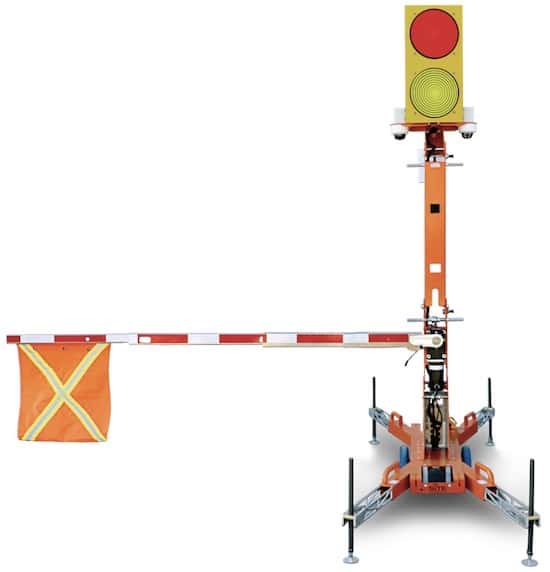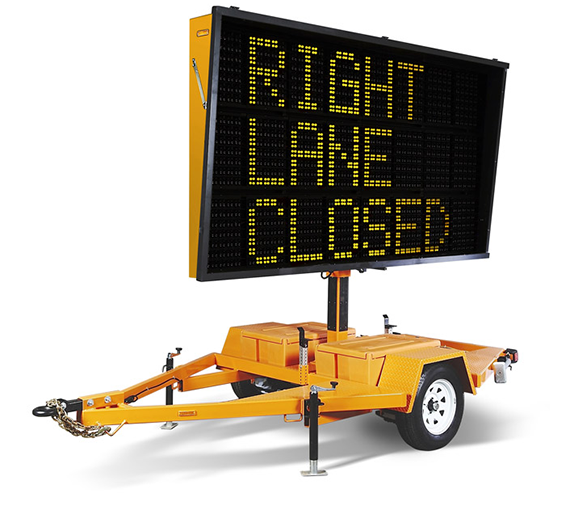Crafting a Blueprint for Safety: The Significance of Traffic Control Plans
By Greg Ryan
Traffic Control Plans are an integral part of civil and structural engineering projects, impacting safety, efficiency, and success. These comprehensive blueprints provide a structured framework for managing vehicular and pedestrian traffic in and around construction sites, roadwork zones, and various infrastructure projects.
By clearly defining the flow of traffic and designating safe zones for pedestrians and vehicles, these plans reduce the chances of collisions and ensure that construction workers and the general public can coexist safely. They provide guidelines for the use of signage, barriers, and other safety measures, helping to prevent accidents that could result in costly project delays, litigation, or worse.
Why a Traffic Control Plan Matters
The importance of a Traffic Control Plan cannot be overstated. To understand its significance, we must first consider that it’s not merely a piece of paper; it’s a comprehensive strategy that can make or break a project’s success. When developed meticulously, a Traffic Control Plan can turn a potentially hazardous work environment into a safer, more efficient workspace.
Here is why Traffic Control Plans matter:
- Safety First
A proper plan anticipates risks, identifies areas of concern, and establishes protocols to reduce the chances of an accident. It considers factors such as traffic patterns, speed limits, lane closures, signage, barriers, lighting, and the timing of the work, among many other factors.
- Project Efficiency
Efficiency is closely tied to safety. Delays caused by traffic issues or regulatory problems can be costly and affect the project’s reputation. When thorough traffic control measures are implemented, they help minimize disruptions, meaning projects are more likely to stay on schedule and within budget.
- Resource Optimization
The old saying, “Give me 30 minutes, and I’m good; give me 30 days, and I’m great,” holds true for Traffic Control Plans. The more time you have to plan, review, and adjust, the better your chances of success. Having a plan in place means you can start preparing for the job before you even arrive at the site. You’ll know the exact equipment needed, the placement of signs and the required personnel. This level of preparedness is a game-changer, especially for complex projects.
- Engineered Controls
Traffic Control Plans are not just about placing cones. They also facilitate advanced traffic management strategies utilizing special equipment like Automated Flagger Assistance Devices (AFADs), portable rumble strips, and message boards, as well as traffic monitoring systems. Their intricacies and the benefits they deliver may not be readily apparent without a documented plan. Allotting experts the time for strategic design and development results in a more robust and resilient blueprint for safety.
- Regulatory Compliance
Civil and structural engineering projects must adhere to a plethora of local, state and federal regulations, including those concerning traffic control. Failure to comply with these regulations can result in fines, project shutdowns or legal complications. A Traffic Control Plan is designed with these regulations in mind, ensuring that the project remains in compliance with all necessary guidelines.

AFADs are automated machines having a gate arm and traffic lights that are controlled by certified Protectors via a roadside tablet. Certain AFADs are also designed to trigger an alarm should a vehicle breach the work zone.
Does Every Project Need a Traffic Control Plan?
One common question that arises is whether every project, regardless of its scale, needs a Traffic Control Plan. The short answer is yes. While the complexity and size of the plan may vary, the core principles remain the same.
For larger projects, like those involving high-speed roadways or extensive construction zones, a comprehensive plan is a must. The intricacies of these projects demand a very high level of detail and organization. Urgent scenarios include:
- High-Speed Roads: On highways or any street where speed limits exceed 45 miles per hour.
- Complex Projects: Any project involving multiple phases, often spanning months, that can significantly impact traffic.
- Emergency Situations: Such as utility pole or work zone accidents. Traffic Control Plans enable rapid deployment of safety measures.
Even for smaller, routine projects on lower-speed roads, having a Traffic Control Plan is a valuable practice. Not only does it ensure that safety standards are upheld, but it also acts as a security blanket, double-checking assumptions and preventing complacency.
For instance, on residential streets or where speed limits do not exceed 45 miles per hour, a comprehensive plan may not be required. However, it’s still advisable to plan for these scenarios to avoid complacency. Additionally, routine maintenance tasks like pothole repairs or minor fixes may not require an elaborate plan. Nevertheless, a simplified checklist can help to ensure safety.
The First Call, Not the Last
When a Traffic Control Plan becomes an afterthought, it can result in unwelcome delays, increased expenses, and compromised safety measures. To fully harness the advantages of a plan, it is essential to prioritize it as an initial step, not the final one. Involving traffic control experts from the outset allows engineers to develop projects that prioritize safety and enhance cost-effectiveness.
In the realm of Traffic Control Plans, professional service providers like AWP Safety emerge as leaders, offering clients a distinct competitive advantage. Projects frequently encounter unforeseen hurdles, such as weather disruptions, emergencies, or shifts in traffic flow, and experts play a pivotal role in adapting to these circumstances, ensuring that safety remains the priority.
Regardless of your chosen provider, it is imperative they possess an in-depth comprehension of traffic control regulations and codes, resulting in plans that not only adhere to compliance standards but exceed them. For instance, certain states mandate a plan for even minor projects, while some municipalities mistakenly overlook the need for plans in the case of highway repairs.
Furthermore, it is prudent to explore a comprehensive traffic control solution, encompassing administrative services, permitting, on-site deployment of Protectors and equipment, as well as readily accessible points of contact for inquiries. The significance of efficient communication among all stakeholders cannot be overstated meanwhile, not only throughout the project’s duration but also in its aftermath, as this post-project phase is crucial for garnering insights to enhance future endeavors.

Portable changeable message signs convey lane closures, detours and speed limit changes to motorists, promoting safer driving in and around work zones.
Always Plan Ahead
When it comes to Traffic Control Plans, think of them as a safety workshop where every aspect of the project is considered, from engineering controls to staffing requirements to compliance with regulations. The more intricate and detailed the plan, the higher the level of protection it can provide. It’s not just about meeting the minimum requirements; it’s about maximizing safety to its full potential.
As such, the development and execution of a Traffic Control Plan is vital for construction projects, with the ultimate goal of creating a safer work environment and smoother operation for everyone involved.
The key to success lies in early planning and professional expertise, which can turn a potentially chaotic situation into a well-organized endeavor. By making traffic control the first call, engineers can unlock the full potential of these plans and deliver safer, more successful projects.
Plan to safeguard your people, property and progress at awpsafety.com.
Greg Ryan serves as vice president, north business division at AWP Safety where he is dedicated to elevating safety compliance and overseeing day-to-day, high-level operational excellence. Since joining the company in 2018, he has excelled in meeting the demanding requirements of delivering comprehensive Traffic Control Plans and protective services to clients. Greg’s educational background includes a bachelor’s degree in physics engineering from John Carroll University.
source https://csengineermag.com/crafting-a-blueprint-for-safety-the-significance-of-traffic-control-plans/
تعليقات
إرسال تعليق